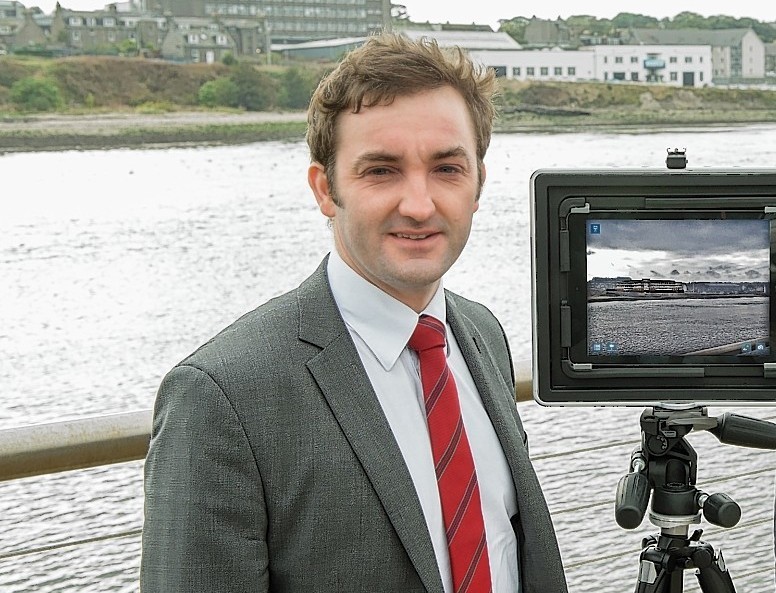New software which allows planners and architects to show what buildings will look like before they are built has been launched by an Aberdeen firm.
Aberdeen-based Pinnacle Visualisation expects sales to surpass £500,000 in its first year after winning early contracts with an undisclosed property developer in Houston.
The “augmented reality” software, Eyesee, was developed to allow planning officials, local authority committee members and investors to visualise on site how a development will look with only a tablet computer.
Its developers claim the new software is now set to be licensed for use by clients across the US and Europe, and could also be used in the oil and gas industry.
The Eyesee programme is the brainchild of Kenny Steele, managing director of Pinnacle Visualisation.
He said the new technology reduces the likelihood that people will say: “I didn’t think it would look like that”.
Led by directors Mr Steel, his father Allan Steele and Lynsey Steele, the family-owned Pinnacle Visualisation builds on a background in commercial property and software development previously established at sister company Pinnacle Consulting in Ellon.
Planning specialist George Massie has also been involved in the two year development of the product.
Mr Steele said: “The planning process is a hugely technical business and a major undertaking for everyone involved in a project – for decades planners and stakeholders have had to rely on drawings and, more recently, 3D computer-generated flythrough videos.
“Every available technique, before now, has been an expensive, time-consuming process. Eyesee has been designed to deliver real cost and project time savings because you can see exactly what you’re going to build in context, with no guesswork required.
“We had one aim and that was to put structures of any kind, from single units to entire masterplans into the real world, so you can see them as though you could reach out and touch them.
“We don’t want to hear the phrase, ‘I didn’t think it would look like that’ again. Eyesee allows you to see what a building really looks like, ultimately saving a huge amount of time and expense on the planning phase by putting 3D renders into the real world, rather than down on paper.”
Mr Massie, whose consultancy in major property development spans more than 30 years and includes significant projects in Scotland, said: “Eyesee does something that, as a development adviser, I think the industry has needed since the dawn of modern technology, but which has only now become possible.
“It simplifies a key stage of the design and planning process by delivering buildings on site, at full scale, at eye level – rather than the artificial aerial views and rendered videos we are used to.”
Mr Steele said: “There’s no limit to the environment in which we can use Eyesee – we are targeting growth internationally in industrial, commercial and residential project development, and there is potential for the system to be used in the energy sector.”
